![[EN/PL] ‘Race and Forest’ by INTERPRT at Biennale Warszawa](https://blokmagazine.com/wp-content/uploads/2020/04/dsf6162-rasa-i-las-2500px-1200x800.jpg)
[EN]
Discussions concerning the climate disaster more and more frequently mention the necessity to acknowledge ecocide as a crime in the light of international law. One of the first ever examples of charges where the environment became the main subject of court proceedings was a case presented by Polish prosecutors, concerning the destruction of Polish forests by Nazi Germany. Race and Forest, the exhibition shown at Biennale Warszawa reconstructs the circumstances of this precedential indictment.
“Race and Forest” investigates the links between genocide, ecocide and forest management. The exhibition was prepared by an interdisciplinary research team INTERPRT which collects facts related to the crimes against the natural environment. It devotes particular attention to points where international humanitarian law intersects the legal protection of the environment. Re-entwining images, documents, testimonies and data from various sources, it creates a framework for new reflection. The project displayed at Biennale Warszawa examines the material and visual nature of the evidence in the case no. 1307.
Its history dates back to 1947, when as part of the United Nations War Crimes Commission (UNWCC), Poland brought against eleven German citizens charges of war crimes related to the destruction of the natural environment. Polish prosecutors prepared a bill of indictment not only for high ranking German state officials, but also the employees of German forestry departments. The trial concerned deliberate devastation of Polish forests in order to supply timber for German war efforts. At the same time Germany was developing modern forestry and taking considerable measures to conserve their own forests.
Part of the exhibition is devoted to the history of a Nazi death camp located near Chełmno nad Nerem (Kulmhof). In the first period of the operation of the camp – hidden in the Rzuchowski Forest – a secret reforestation plan was implemented in order to hide the evidence of mass graves. The investigative project carried out by INTERPRT in cooperation with Biennale Warszawa combines archival and cartographic research with wartime testimonies and LIDAR scanning to conduct a new spatial analysis of this area.
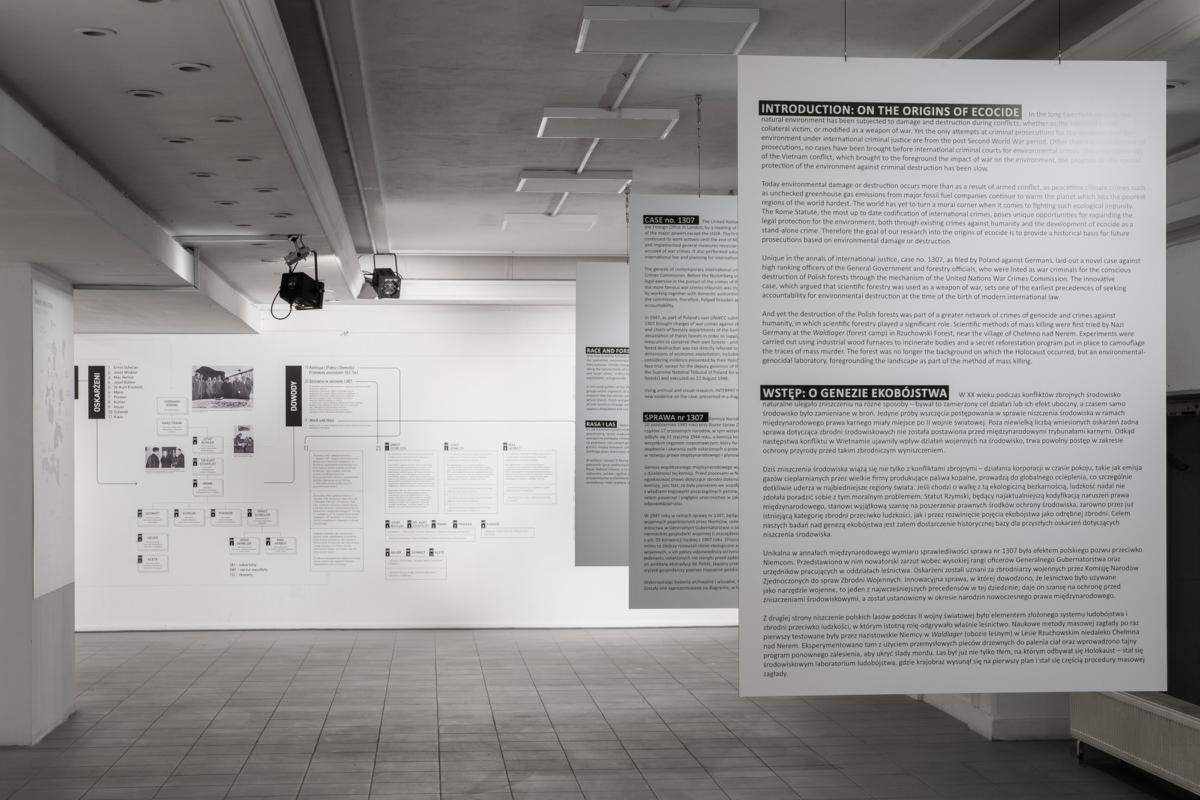
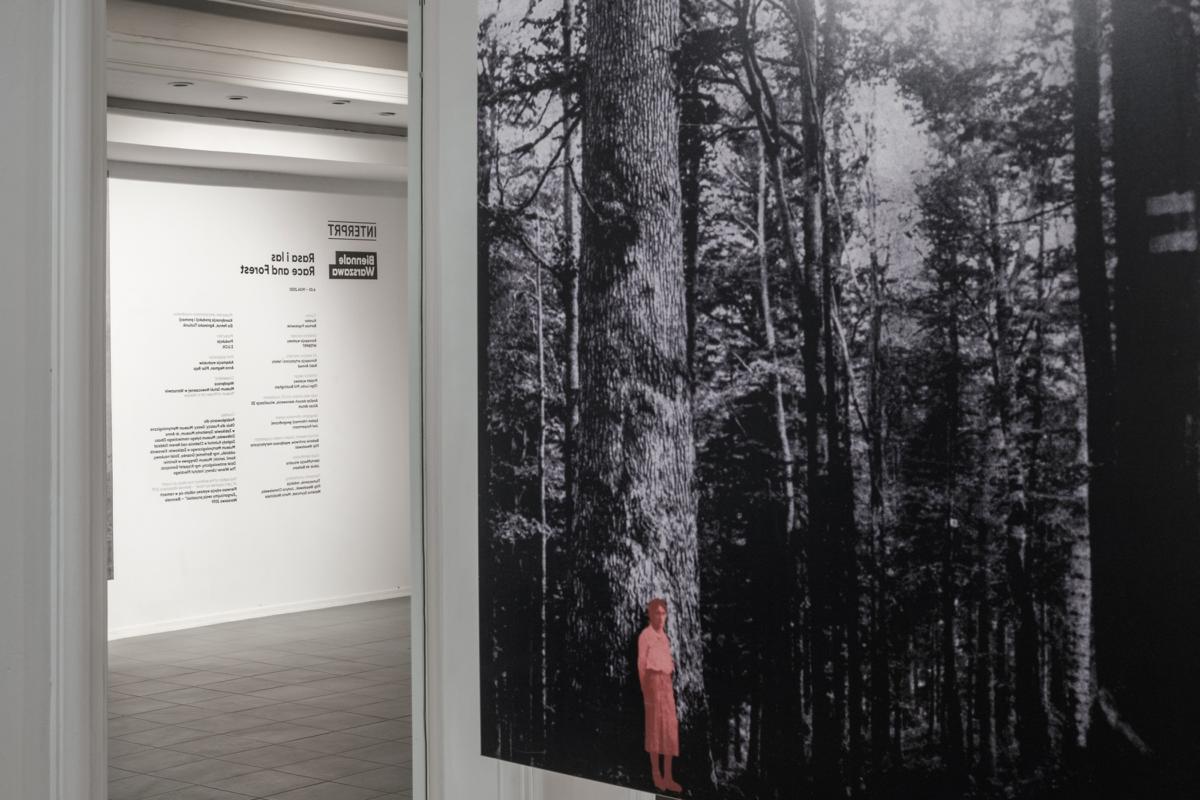
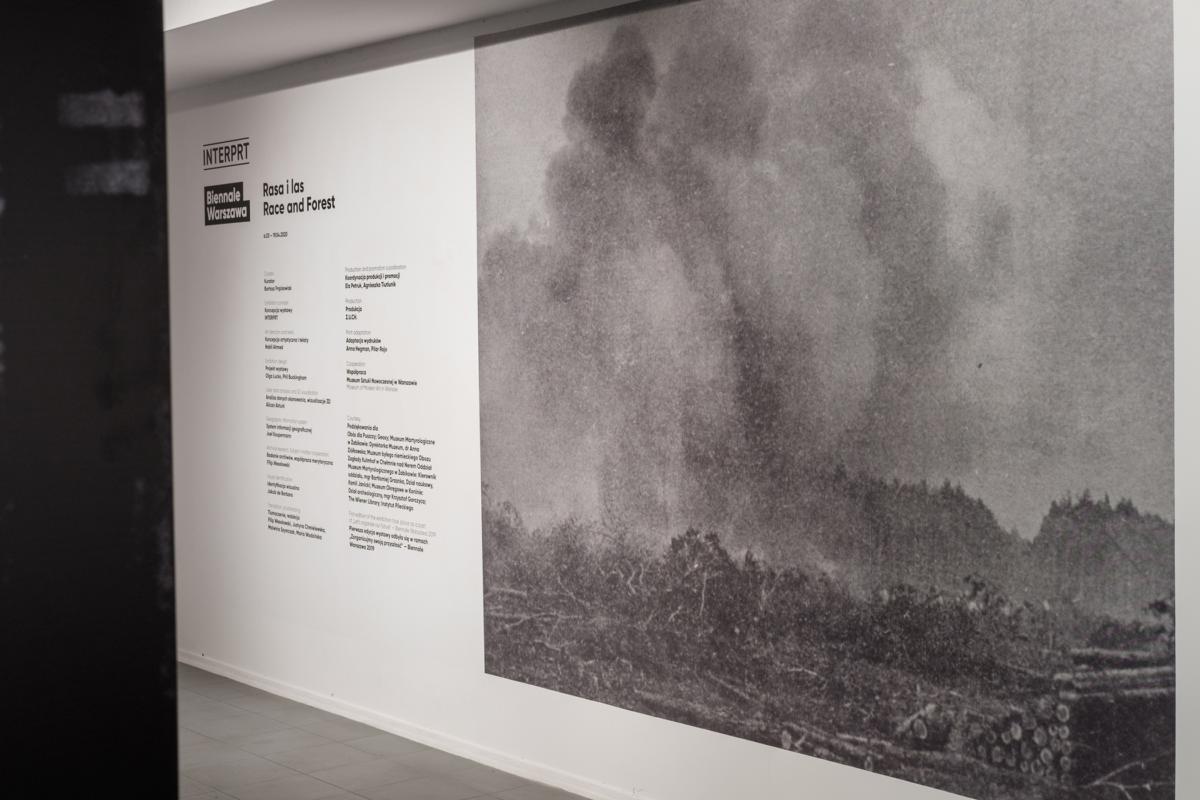
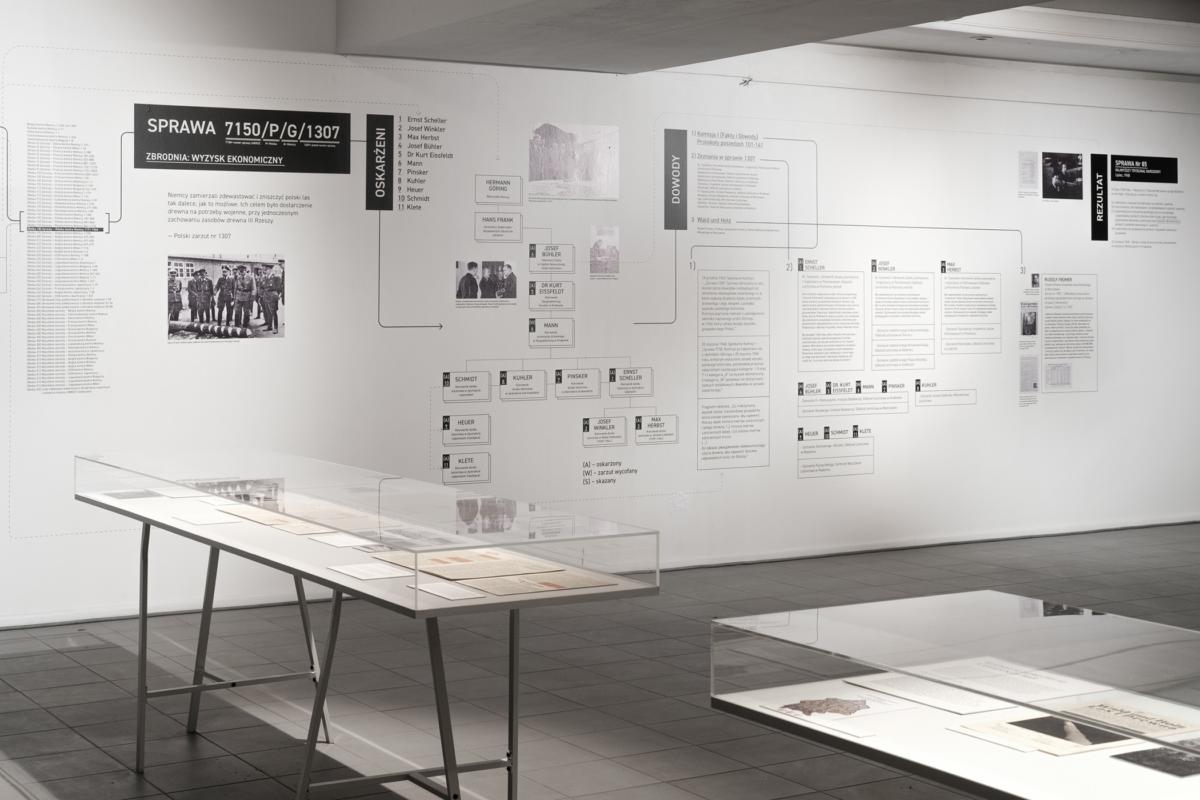
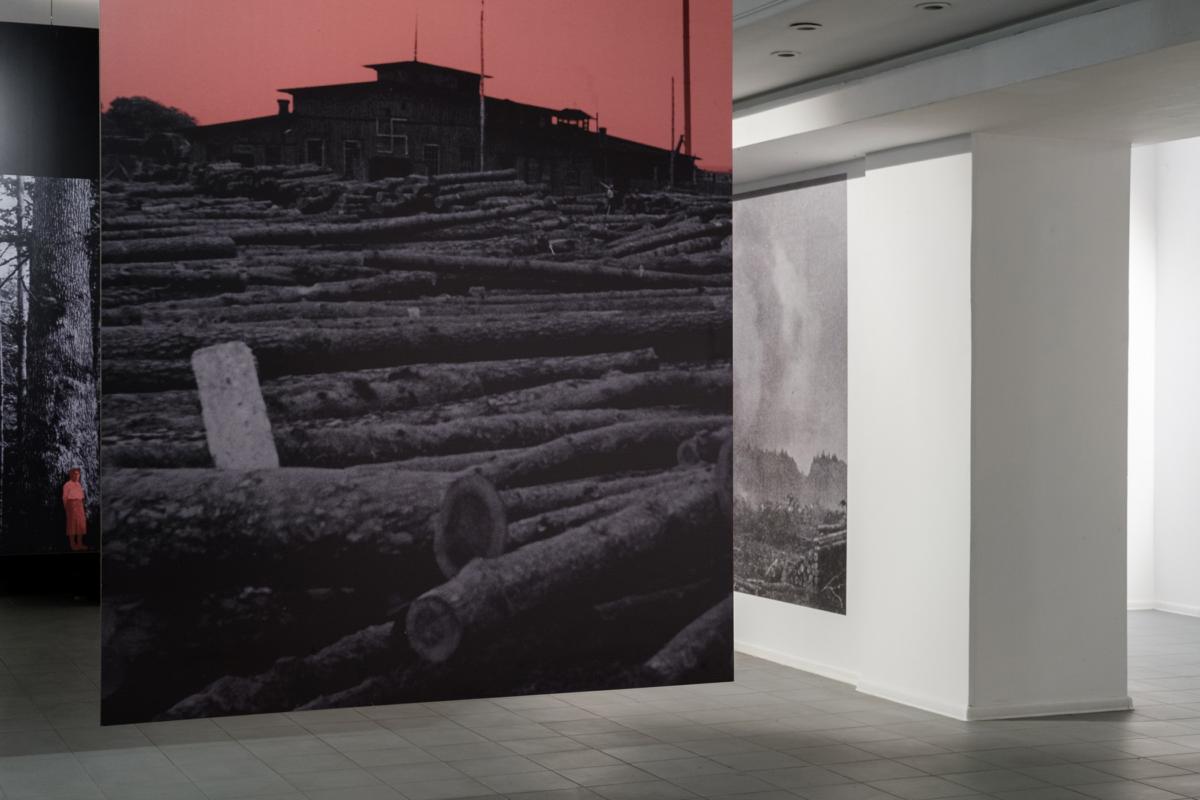
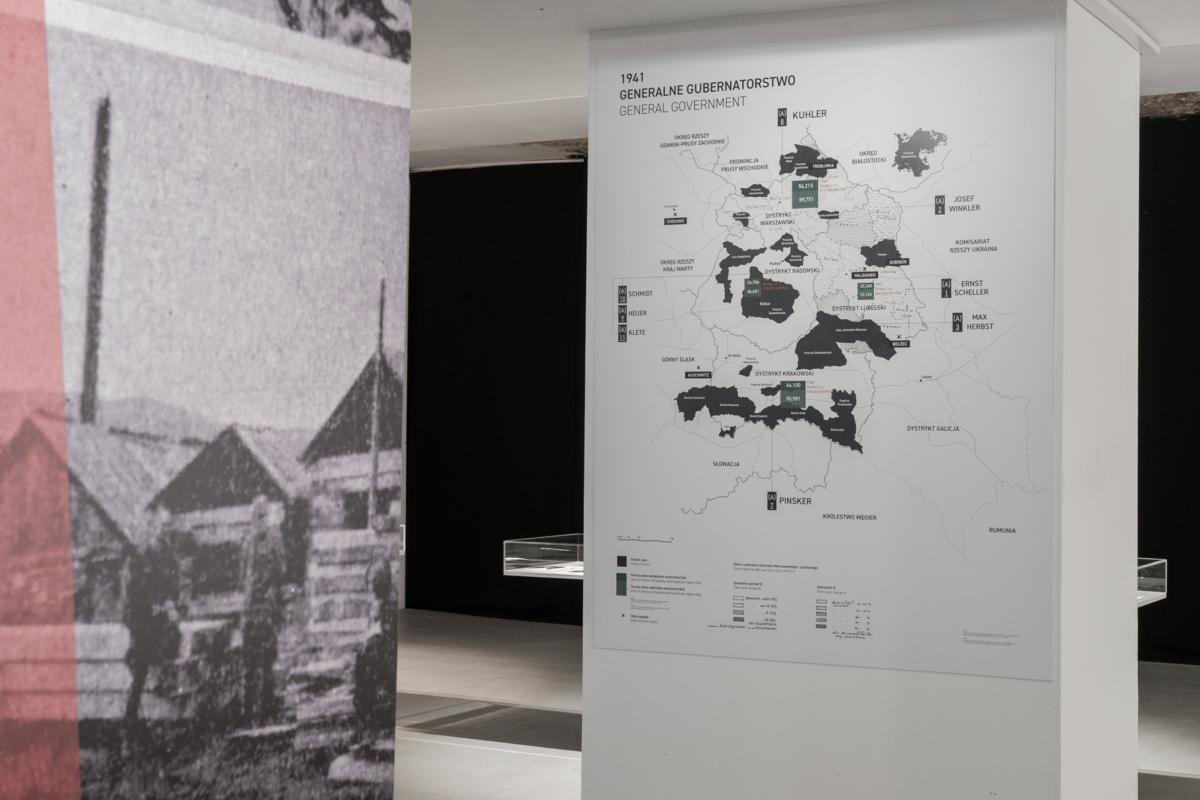
The exhibition will also feature materials concerning how were the race issue and environmental issues connected in the Third Reich ideology. Among them, “Wald und Holzer” (forest and timber), a periodical which during the Second World War was the official gazette of the forestry industry in the German-occupied areas. The data collected in it were supposed to help in effective exploitation of Polish forests. The paper propagated the ideology of environmental racism, according to which Germanic and Nordic people were to protect nature against the designs of savage Slavic peoples.
The new exhibition at Biennale Warszawa constitutes an expanded version of “Race and Forest” which was open for visitors for two weeks during “Let’s organise our future!”, during Biennale Warszawa in June 2019. It was supplemented by new materials, including first and foremost film footage prepared by INTERPRT at Home Works 8 in Beirut. Due to the unrest in Lebanon the event was cancelled, and new elements of the exhibition, the same as the lecture given by Nabil Ahmed (co-founder of INTERPRT), were not presented to the public. Now they will enrich the exhibition at Biennale Warszawa.
By analysing the history of genocide in the context of nature, “Race and Forest” includes the study of the Holocaust into the current deliberations about climate change and human responsibility for the environment. Can the case no. 1307 become a basis for considering nature as a legal entity? How to extend legal protection also to non-human beings, animals, or ecosystems?
Taking up the topic of crimes related to the environment requires a comprehensive view – not only new formulas of thinking, but also acting. When designing the communication for “Race and Forest” we wanted to reduce the environmental impact of our actions to a minimum. We have made only a single copy of a leaflet for our visitors to pass around, and a single poster exhibited for a limited time in various places. While reducing the industrial manufacturing of materials, we want the Internet to be the main source of information about the exhibition, and knowledge about it to travel by word of mouth and to be handed around.
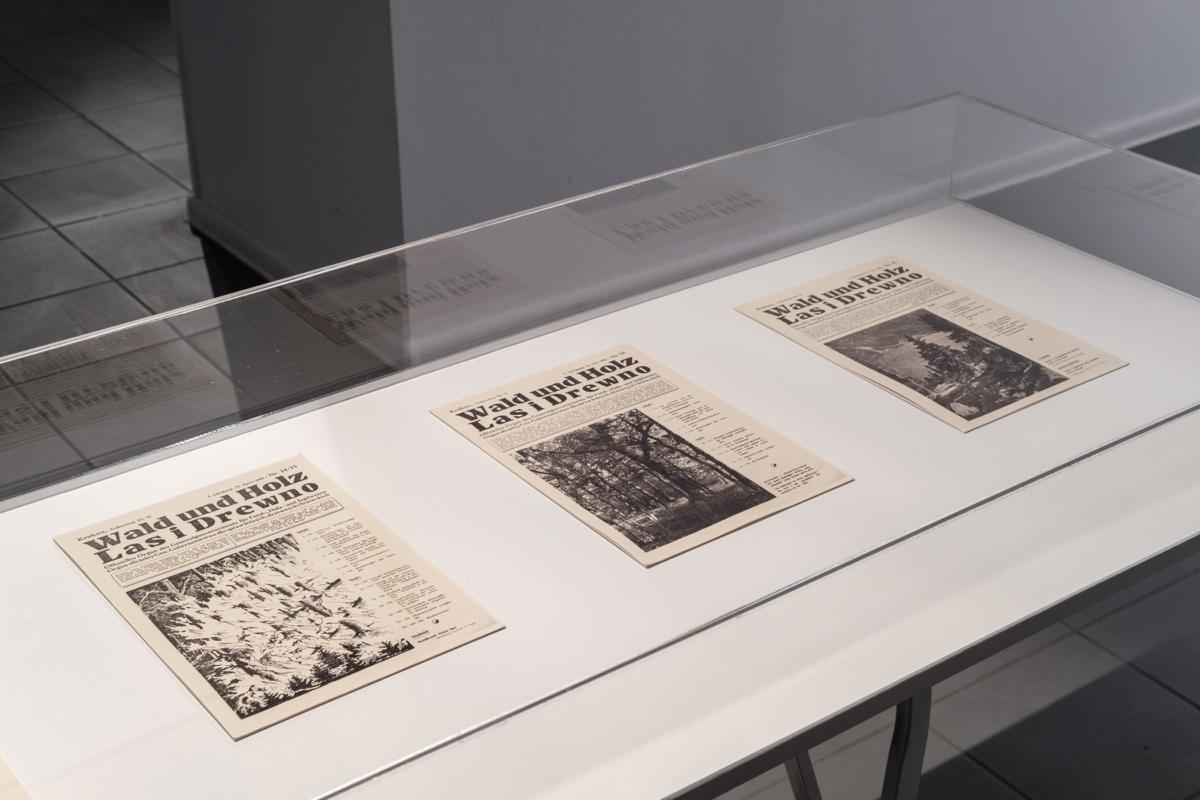
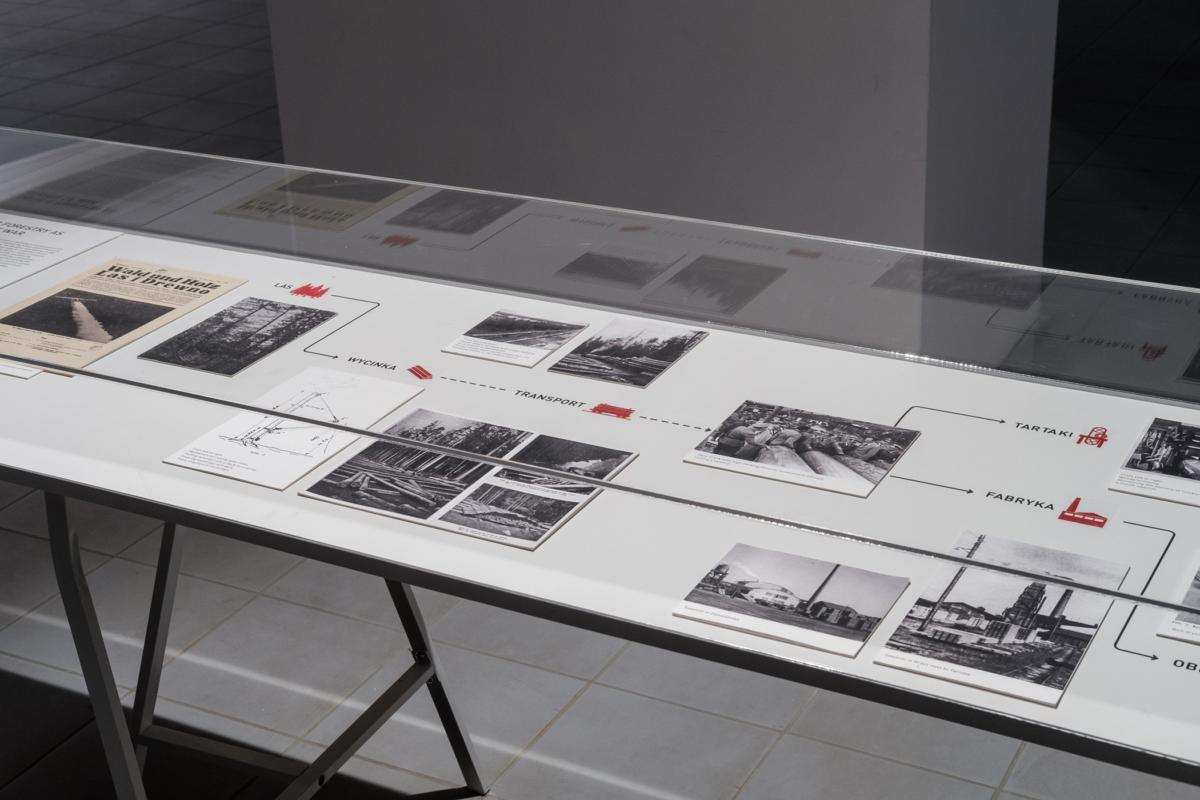
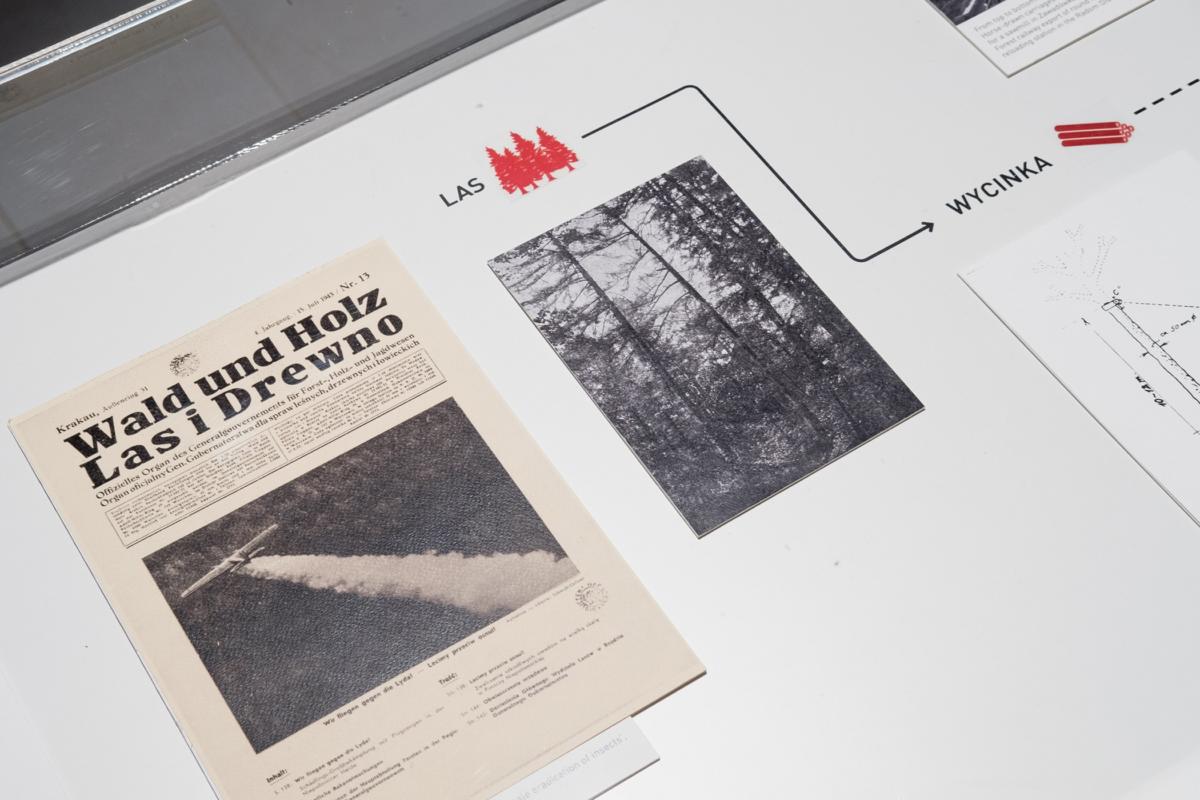
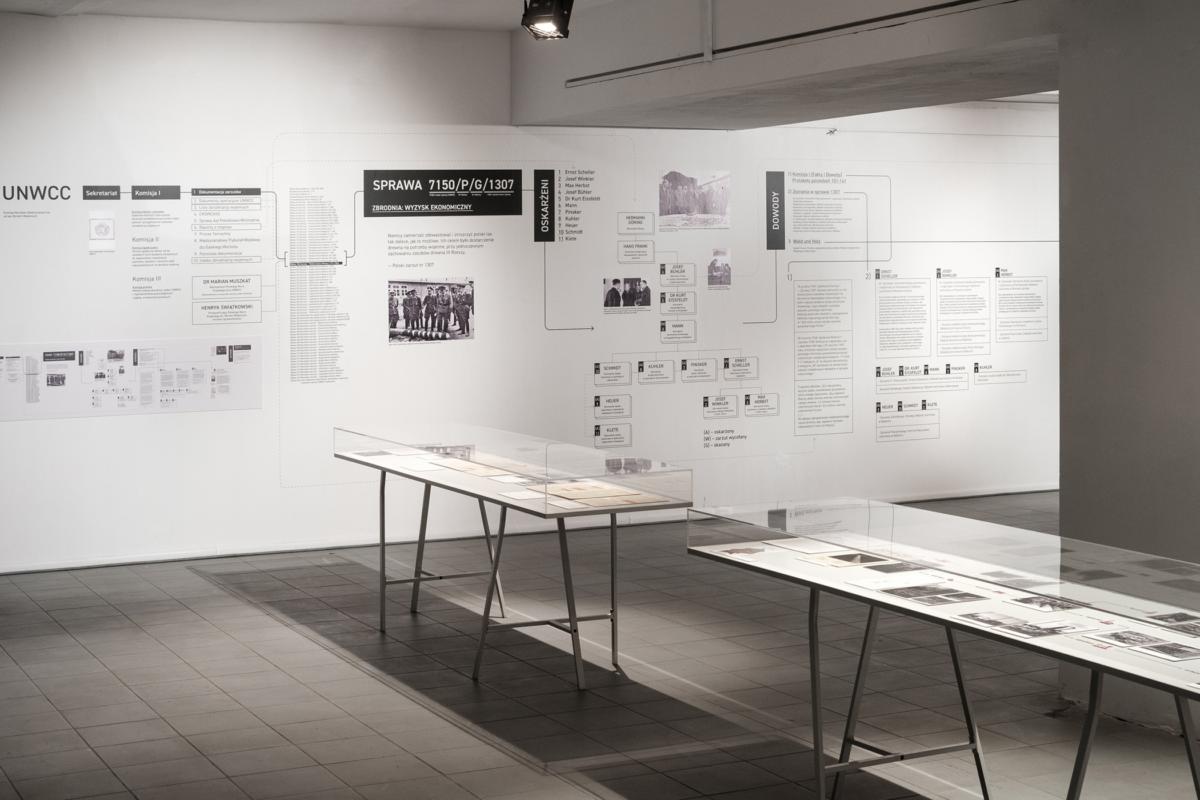
[PL]
W dyskusjach związanych z katastrofą klimatyczną coraz częściej mówi się o konieczności uznania ekobójstwa za zbrodnię w świetle prawa międzynarodowego. Jednym z pierwszych w historii przykładów oskarżenia, podczas którego środowisko stało się głównym przedmiotem procesu sądowego, była podniesiona przez polskich prokuratorów sprawa o zniszczenie polskich lasów przez nazistowskie Niemcy. Wystawa „Rasa i las” pokazywana w Biennale Warszawa rekonstruuje okoliczności tego precedensowego aktu oskarżenia.
Wystawa „Rasa i las” śledzi związki ludobójstwa, ekobójstwa i gospodarki leśnej. Ekspozycja przygotowana została przez interdyscyplinarny zespół badawczy INTERPRT, który zajmuje się gromadzeniem faktów związanych ze zbrodniami na środowisku naturalnym. Zwraca szczególną uwagę na punkty styku międzynarodowego prawa humanitarnego z prawną ochroną środowiska. Splatając na nowo obrazy, dokumenty, świadectwa i dane z różnych źródeł, tworzy ramę dla nowej refleksji. Projekt pokazywany w Biennale Warszawa bada materialność i wizualność dowodów w sprawie nr 1307.
Historia sięga 1947 roku, kiedy w ramach działania Komisji Narodów Zjednoczonych ds. Zbrodni Wojennych (UNWCC), Polska oskarżyła jedenastu obywateli Niemiec o zbrodnie wojenne związane ze zniszczeniem środowiska naturalnego. Polscy prokuratorzy przygotowali akt oskarżenia nie tylko wobec wysokich rangą niemieckich urzędników państwowych, ale również ludzi pracujących w niemieckiej administracji leśnej. Proces dotyczył celowego niszczenia polskich lasów, żeby zagwarantować zaopatrzenie w drewno konieczne do prowadzenia działań wojennych. Równocześnie Niemcy rozwijały nowoczesne leśnictwo i podejmowały istotne działania na rzecz konserwacji własnych lasów.
Część wystawy poświęcona jest historii nazistowskiego obozu zagłady zlokalizowanego w Chełmnie nad Nerem (Kulmhof). W pierwszym okresie działania obozu – ukrytego w Lesie Rzuchowskim – sekretny plan zalesiania wykorzystywano do ukrywania dowodów istnienia masowych mogił. Projekt śledczy INTERPRT we współpracy z Biennale Warszawa, łącząc badania archiwalne i kartograficzne, świadectwa ustne z czasów wojny i badanie skanerem LIDAR, przeprowadza ponowną analizę przestrzenną tego terenu.

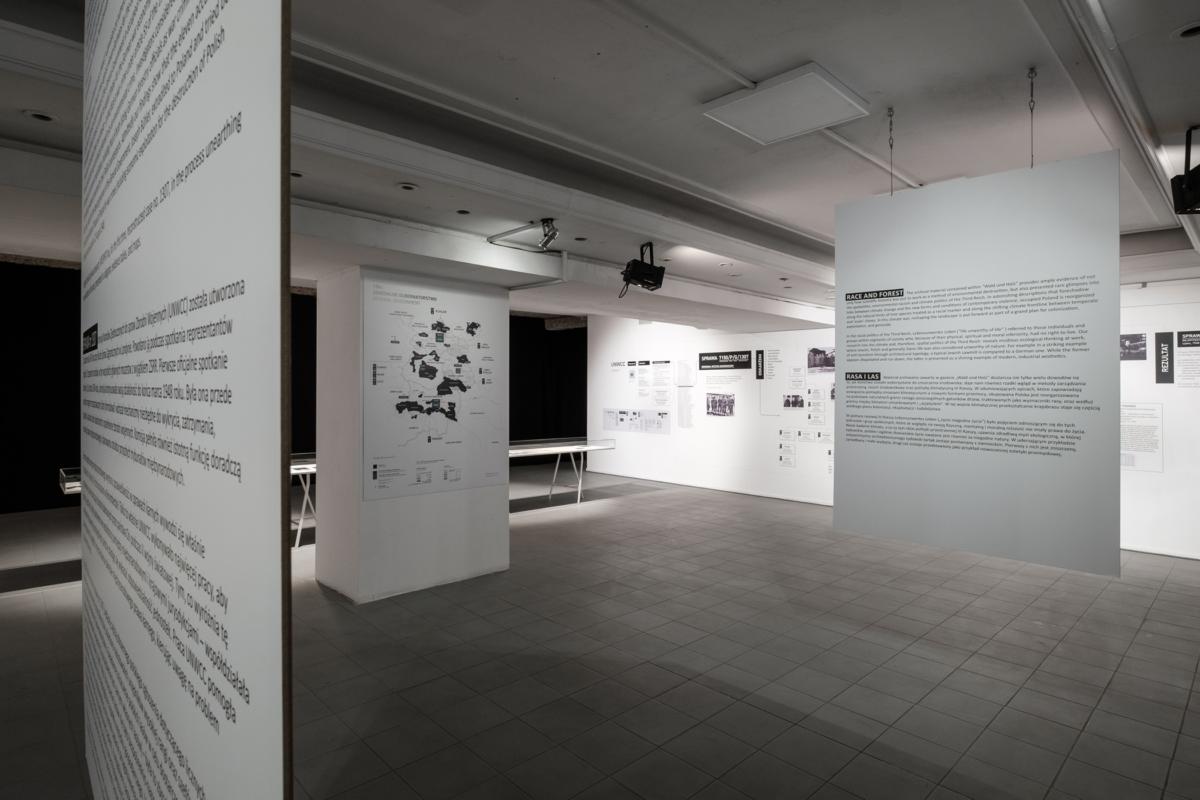

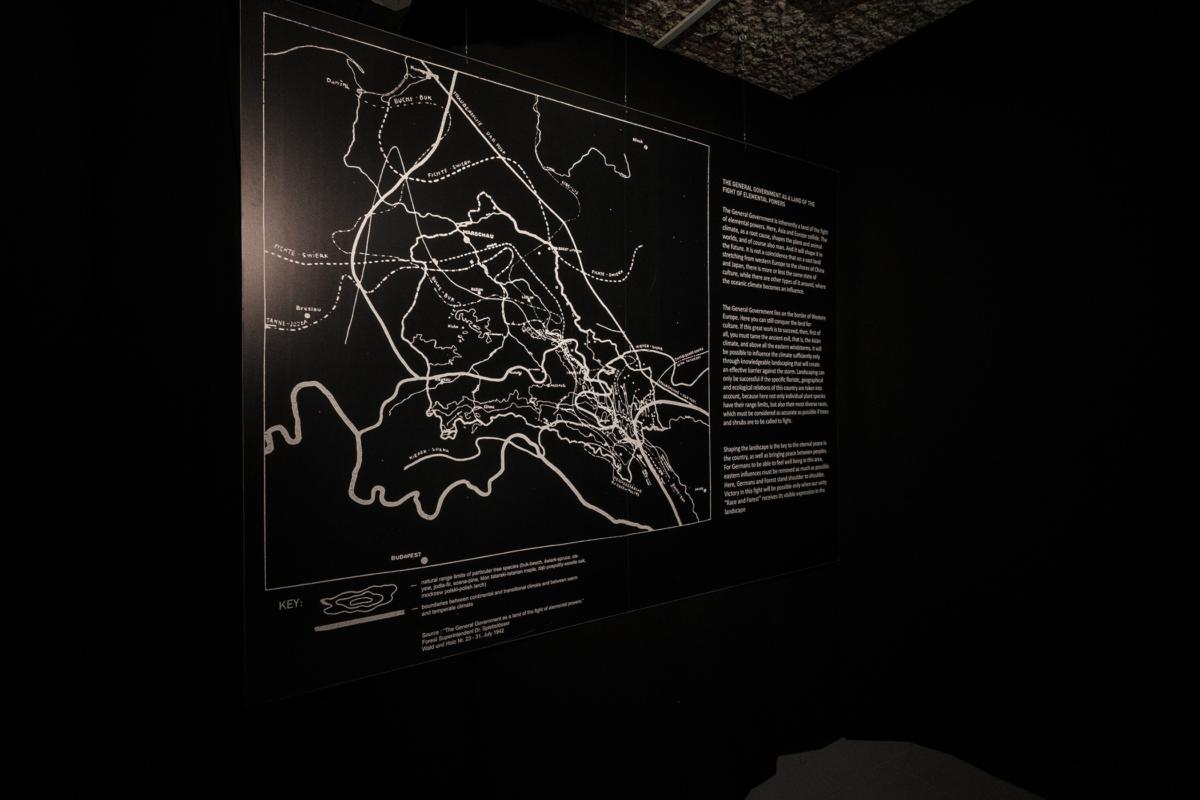
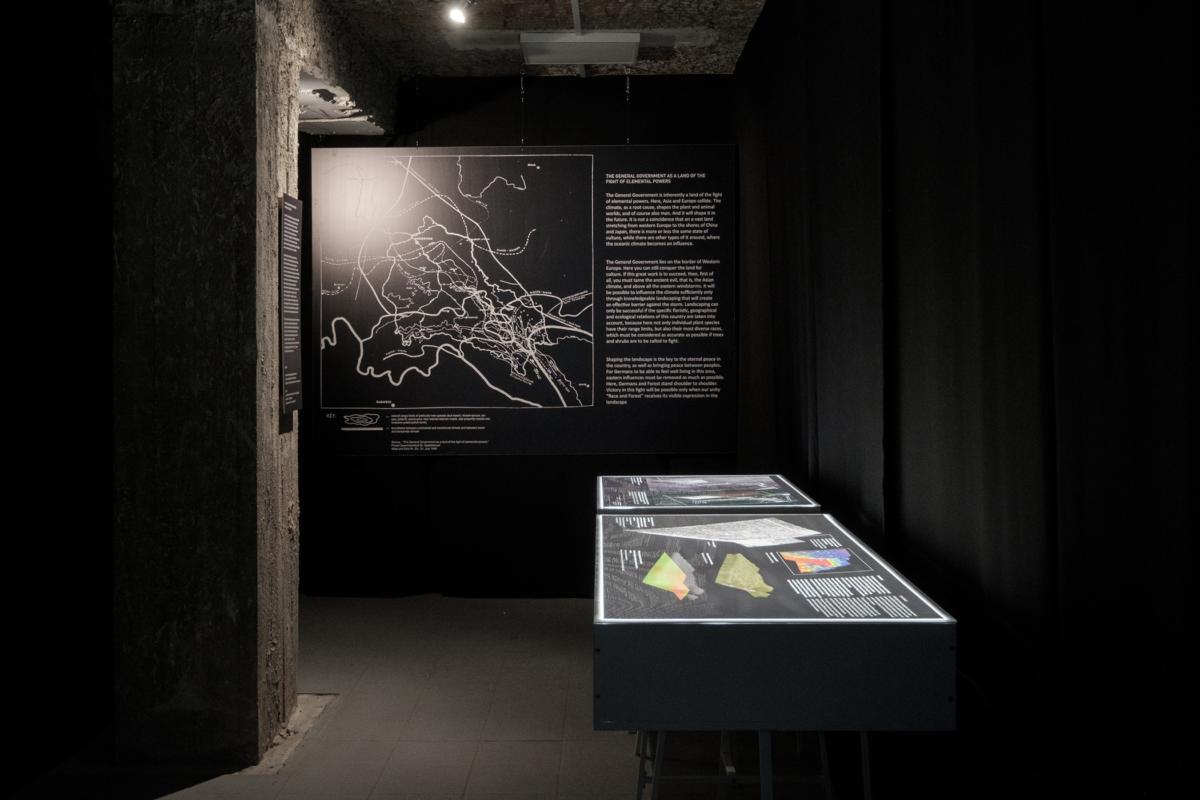
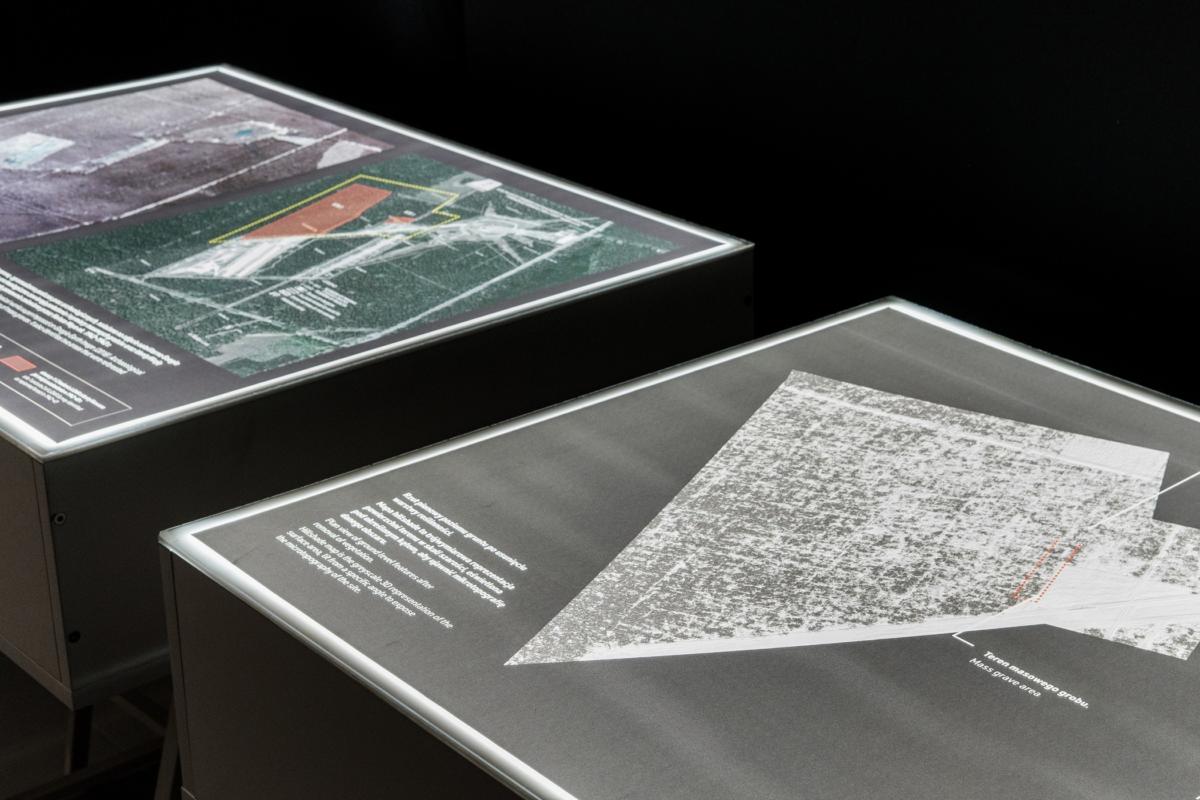
Na wystawie zobaczymy także materiały dotyczące tego, w jaki sposób tematyka rasowa i środowiskowa łączyły się ze sobą w ideologii III Rzeszy. Wśród nich znalazło się m.in. czasopismo „Las i Drewno” („Wald und Holz”), które w czasie II wojny światowej było oficjalną gazetą branży leśnej na terenie niemieckiej okupacji. Zebrane w niej dane miały pomóc w efektywnej eksploatacji polskich lasów. Na jej łamach głoszono ideologię rasizmu środowiskowego, według której ludy germańskie i nordyckie mają chronić naturę przed zakusami dzikich, słowiańskich ludów.
Nowa wystawa w Biennale Warszawa stanowi rozszerzoną wersję „Rasy i lasu”, którą można było zobaczyć przez dwa tygodnie podczas Biennale Warszawa „Zorganizujemy swoją przyszłość!” w czerwcu 2019 roku. Uzupełniona została ona o nowe materiały, w tym przede wszystkim materiał filmowy, przygotowany przez INTERPRT na Home Works 8 w Bejrucie. Z powodu wybuchu protestów w Libanie wydarzenie odwołano, a nowe elementy wystawy, podobnie jak wykład Nabila Ahmeda (współzałożyciela INTERPRT), nie zostały zaprezentowane publiczności. Teraz wzbogacą wystawę w Biennale Warszawa.
Analizując historię ludobójstwa w kontekście natury „Rasa i las” włącza studia nad Zagładą w aktualne rozważania o zmianach klimatu i odpowiedzialności człowieka za środowisko. Czy sprawa 1307 może stać się podstawą uznania przyrody za podmiot prawny? W jaki sposób objąć ochroną prawną również istoty nie-ludzkie, zwierzęta czy ekosystemy?
Podjęcie tematu przestępstw związanych ze środowiskiem naturalnym wymaga spojrzenia całościowego – nie tylko nowych formuł myślenia, ale także działania. Projektując komunikację „Rasy i lasu”, chcemy ograniczyć do minimum wpływ naszych działań na środowisko. Naszym widzom udostępniamy jedną sztukę przekazywanej sobie ulotki i jeden egzemplarz plakatu, który eksponowany jest czasowo w kolejnych miejscach. Chcemy, redukując przemysłową produkcję materiałów, by głównym źródłem informacji o wystawie był Internet, a wiedza o niej przekazywana była z ust do ust i z rąk do rąk.
Imprint
| Artist | INTERPRT |
| Exhibition | Race and Forest |
| Place / venue | Biennale Warszawa, Warsaw |
| Dates | 6 March – 19 April 2020 |
| Curated by | Bartosz Frąckowiak |
| Website | biennalewarszawa.pl |
| Index | Bartosz Frąckowiak Biennale Warszawa INTERPRT |
